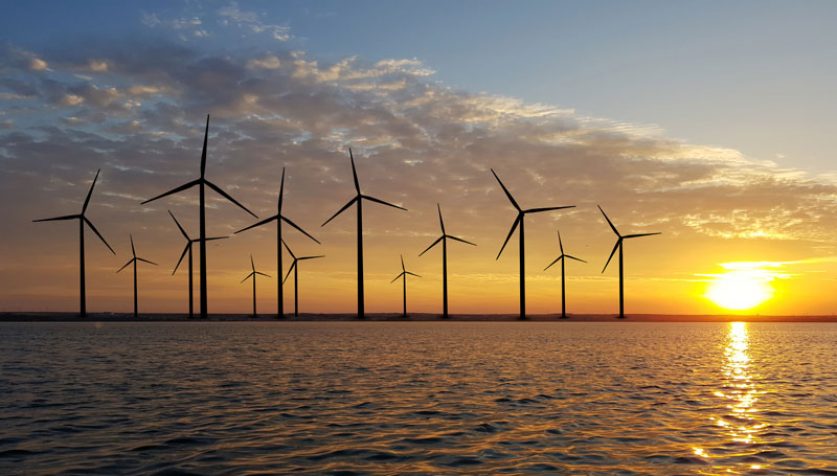
A new report by ORE has shown that developments in floating wind power generation could bring £34bn to the UK coffers.
The study, published by Offshore Renewable Energy (ORE) Catapult and commissioned by the Crown Estate Scotland, looked into the costs of developing floating wind farms, as well as the potential benefits the technology could bring to the economy. By 2050, it is claimed, floating wind could contribute £33.6bn to the economy, and could provide up to 17,000 jobs.
The report involved “a technology assessment of floating wind”, with ORE reviewing over 30 devices at varying degrees of “technology readiness” to determine the potential value of developing the tech in the UK. According to Andrew Jamieson, ORE Catapult’s Chief Executive, the report also “highlights the key areas where we can work with developers and the supply chain on technology development and standardisation to drive down industry costs and make floating wind viable”.
While floating wind technology is still “at an early stage of development”, Scotland already has two “operational test and demonstration scale projects” and Cornwall is interested in developing a similar project in the future.
Offshore wind produces a large portion of the UK’s energy and generates a commensurate amount of money for the economy. However, the “global potential market for floating wind” is far greater than that for offshore wind. This means that developing further floating wind projects is likely a very good move for the UK economy.
Sian Wilson, senior development manager at Crown Estate Scotland, explains why this is such an exciting time for floating wind: “At a time when the need to tackle climate change has never been greater or starker, and policy support for innovation, industrialisation and regeneration of high-quality jobs is increasing, the floating wind opportunity ticks all the boxes. Thousands of UK jobs, global exports and clean and secure energy generation are all up for grabs—if the right government support is in place”.
This sentiment was echoed by Gavin Smart, author of the report, who said, “Offshore wind will play a significant role in the UK in maximising the economic and industrial benefits of renewable energy generation. However, to reach anything like its full potential will require a significant contribution from floating wind”.
Places like Scotland, that have deep waters and strong winds, are the ideal locations for wind farming and the “deployment of floating offshore wind turbines”. Other countries are recognising the opportunity with markets “emerging…in Japan, US, China, Taiwan, Korea, Norway, Spain, and Portugal”. Globally, the market is expected to grow by “at least 4GW installed by 2030 and 55GW by 2050”, which would result in markets of £3.1 billion £7.1 billion. If the UK invests the right amount of support, it could be contributing an annual export value of £230 million by 2031.
While the study has made clear the massive potential profits that floating wind could contribute to the UK economy, largescale commitment and support is required from the government in developing the technology and launching commercial tests.




